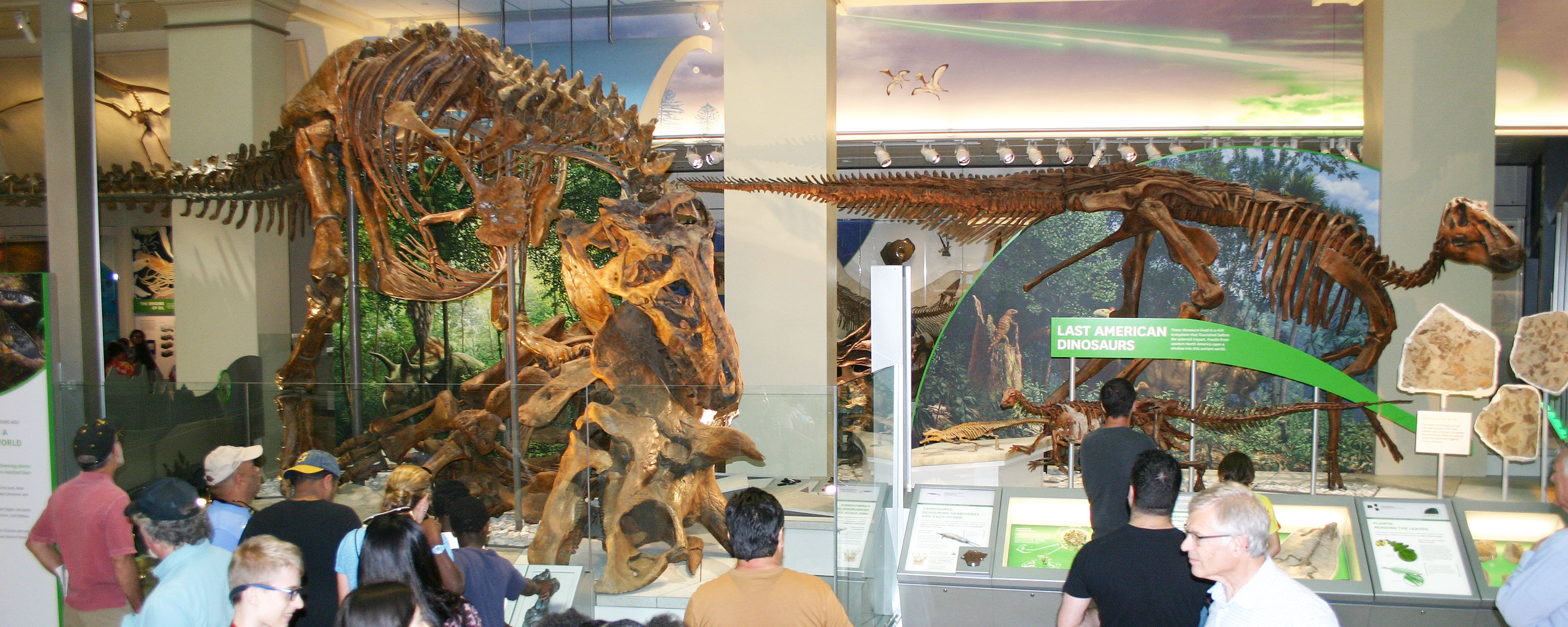



The first big project for the semester will an individual presentation discussing recent discoveries and analyses of fossil information. These will be presented in Discussion during the middle section of the course.
There are several steps for this project. The first one is selecting your paper:
Dr. Holtz has selected a number of papers from the recent paleontological literature to choose from. These are from technical journals, so they will contain terminology and concepts beyond the scope of this course. That said, you should be able to glean the important information from your reading. (If you are having problems, though, feel free to talk with or email Dr. Holtz for clarification.)
Go to the paper sign up sheet (provided on ELMS) and examine the papers provided. You can use the links in your browser to access the papers: these have been selected from the "open access" literature, so you should be able to access them from wherever you are without having to use the University's library system. Take a look at them and see if they interest you.
When you find one you like, write your name and your section number in the space provided. No two students can use the same paper.
(If you come across a paper in the recent technical literature that isn't currently listed and you REALLY want to do the report on it, send the link to Dr. Holtz and see if he will approve it. There might be some reason he didn't include if (for instance, he might be talking about it in a lecture, or it might be in one of the discussion projects, etc.) But he might approve it, so it is worth checking.)
Since you are presenting your paper to other students, you want to understand it as best you can. So you may need to do some outside reading to get more background. This is the sort of thing that going to Wikipedia (for a start) is great for: looking up additional information about concepts, definitions, etc. You may have to look up other sites and resources as well.
(Just to warn you in advance: there will likely be a bewildering amount of terminology involved, in particular about stratigraphy and geologic time, anatomy, taxonomy, and (perhaps most especially) data analysis.)
In general, you want to be able to understand the basics of:
Creating Your Presentation: The primary delivery of your project will be a presentation on PowerPoint, Keynote, Google Slides, or Prezi shared in the Zoom Discussion section. You will be informed in advance which day your team is going to present. Plan for a presentation about 5-6 minutes long. I suggest the following basic structure for your presentation:
You'll want to do your research in order to understand the paper and to find images to populate your presentation well prior to presenting.
I suggest the following basic structure for your presentation:
But feel free to show your creativity. It might be helpful to examine the following online resources for suggestions on effective PowerPoint Presentations:
I encourage the use of images, charts, graphics, and animations, keeping in mind at all times University regulations about plagiarism, proper citations, etc. Each and every such item must be properly referenced: at minimum, I expect to see a small caption from the source on the page. (We will provide examples of how to do this in discussion section). (However, you do not need to cite figures from the main paper itself; you've already given the citation details for that.) I most DEFINITELY expect to see illustrations when you are explaining taxa or fossil sites, and to see the graphics used in the analyses! Please, no text-only PowerPoints!
Consider that your PowerPoint is the equivalent of a major term paper, and is held up to the same academic standards. Thus, we expect:
Some observations and comments:
As you can see, this will take a fair amount of work.
ABSO-FRIGGIN-LUTELY please do NOT put this off until the last minute (i.e., the night before it is due), because there is no reasonable way you will do a decent job on it in that case.
We definitely recommend practicing your presentation (by yourself, or to friends or family) several times before the time you present it in section. Learn which slides are the most important, and on which you do not need to linger.
Each person will present on a different discussion section meeting in the middle of the course. There will typically be three presentations per section meeting.
The day and order of which students present when will be established after every student has selected a paper. To make sure this is done with as little difficulty as possible, PLEASE be aware of any potential conflicts (e.g., missing a section due to doctor's appointments or trips or whatever) in advance, so the schedule can be worked out accurately in advance!
Obviously, not every student can go on the last day! (Furthermore, there is the benefit of being able to relax by getting your presentation over with earlier rather than later.)
Should a scheduling conflict arise after the schedule has been drawn up and announced, contact Dr. Holtz IMMEDIATELY!! Ideally there will be time for you to switch with another student who can take your place. Do not wait until the last minute to let people know about the conflict: that is irresponsible and creates unnecessary challenges to the instructor and the class.
(That said, obviously in extreme unforeseen circumstances we will have to find some other solution. But rest assured: every single student is required to present in discussion section.)
Not only do you have to research and present; you also have to observe and comment! Each student has to do a peer evaluation (using this form) of all the other students' presentations. These will be uploaded onto ELMS.
After you have presented, please upload the final version of your presentation on ELMS under the "Individual Presentations: Faculty Evaluation". If you presented as PowerPoint or Keynote, upload as is. If you used Google Slides or some other format, please download/convert/save as PowerPoint and upload the file.
